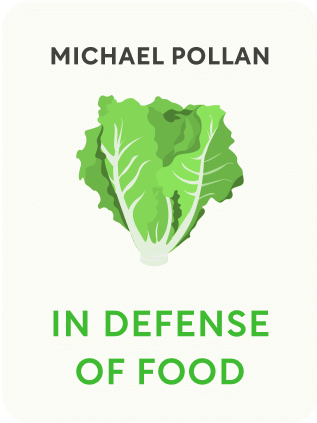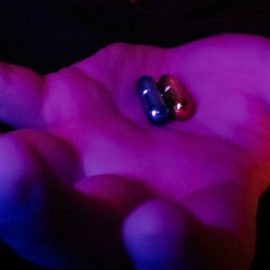

This article is an excerpt from the Shortform book guide to "In Defense of Food" by Michael Pollan. Shortform has the world's best summaries and analyses of books you should be reading.
Like this article? Sign up for a free trial here .
Why are so many Americans sick and obese given their obsession with healthy eating? What is it about the American diet that’s sent the health of the population into a tailspin?
Studies show that albeit the concern for healthy eating, American rates of diseases such as diabetes, heart disease, stroke, and cancer are going up. According to Michael Pollan, the author of In Defense of Food, the problem with the American diet is that it places too much focus on food’s nutritional content.
Here is what’s wrong with the American diet, according to Michael Pollan.
What’s Wrong With the American Diet?
Americans have become obsessed with health labels and eating by the numbers, but none of this has resulted in better health. In fact, an increase in the rate of heart disease, diabetes, cancer, and obesity is the result of the American diet and the overwhelming focus on food’s nutritional content (nutritionism).
Nutritionism is an ideology about nutritional science, not an actual branch of that science. The focus of nutritionism is on isolating certain nutrients—proteins, carbohydrates, certain fats, and antioxidants—as the cause of either good or bad health. The concept is “eat more of the good nutrients to live longer.”
But this narrow view of health and eating ignores the other advantages of food. These advantages include the holistic benefits of whole foods and a more traditional food culture.
The focus on nutrients led to the lipid hypothesis, a theory developed in the 1960s that states that fat and cholesterol, mostly from meat and dairy, lead to increased rates of heart disease. Originally, the hypothesis was used to urge consumers to eat less animal protein and dairy, but the powerful and influential meat and dairy industries fought back.
They used the concept of nutritionism to shift the blame from the unhealthy whole foods to unhealthy nutrients. Their efforts changed government guideline language from “eat less animal proteins and dairy” to “eat proteins and dairy that help reduce saturated fat.” With this shift, nutritionism gained a massive hold over America’s food culture.
The Birth of Imitation Food
The science and food industries tightened their grip on the American diet after winning another major battle against real food. In the early 20th-century, the Food and Drug Administration stipulated that “imitation” food, or food made with artificial ingredients or chemically altered, must be labeled as such. With food manufacturers now touting the benefits of nutritionism and processing foods to match, they feared the negative response consumers might have to this label.
With the help of the American Heart Association, who recommended that foods be modified to reduce cholesterol and saturated fats, the food industry was successful in repealing the mandate. Now, any food-like product that equaled or surpassed real food in nutrient value could be sold without a warning label. The age of processed food kicked into high gear.
The Low-Fat Fiasco
The issues with nutritionism and processed foods would be nil if we were actually getting healthier, but we’re not, thanks to the lipid hypothesis. The lipid hypothesis made saturated fats the main enemy of health. People believed that removing saturated fats from food and replacing them with “good” fats, like hydrogenated seed oil, was the best solution to improving health. The low-fat food revolution began, with hydrogenated oil becoming the fat of choice to be added to all foods to make them healthier. This decision had far-reaching consequences. Many believe the current obesity and diabetes epidemics in America correspond with the rise of low-fat foods in the 1970s.
The process of solidifying vegetable oil using hydrogen creates trans fat. Scientists and food marketers urged Americans to eat more trans fat in low-fat foods. Unfortunately, the evidence supporting this recommendation was flimsy from the start.
American diet habits during and after WWII formed the assumptions that led to the lipid hypothesis. During the war, meat and dairy were rationed and heart disease was low. After the war, eating resumed as normal, and heart disease increased. But the researchers failed to acknowledge that people ate less during the war and exercised by walking more because of rationed gasoline. Also, post-war eating became increasingly industrial, with hydrogenated oil in foods like margarine already soaring in popularity during that time.
It wasn’t until the 1990s that scientists realized the deadly effects of trans fat. But by that time, it was too late. Low-fat foods had taken over the American diet, and Americans got fatter and sicker.
Is the Damage Reversible?
Most nutritional studies in America have one thing in common—none of them examine the types of food promoted by the Western diet. They only look at nutrients. But when you ignore the effects of processed foods, added fats, sugar, and scant amounts of fruits, vegetables, and whole grains on the body, you’re missing a big piece of the puzzle.
Scientists now know that the standard American diet is linked to killer diseases. What was not known before was whether the negative effects could be reversed. However, studies now show that reverting back to traditional dietary patterns involving whole foods can mitigate the damage done. To create eating habits that support better health, we need to fix the relationship between humans and food as part of the overall food chain.

———End of Preview———
Like what you just read? Read the rest of the world's best book summary and analysis of Michael Pollan's "In Defense of Food" at Shortform .
Here's what you'll find in our full In Defense of Food summary :
- Why eating a Western diet is killing you
- How the rise of low-fat foods contributed to the rise of obesity and diabetes
- What to eat if you want to restore a healthy relationship with your food






